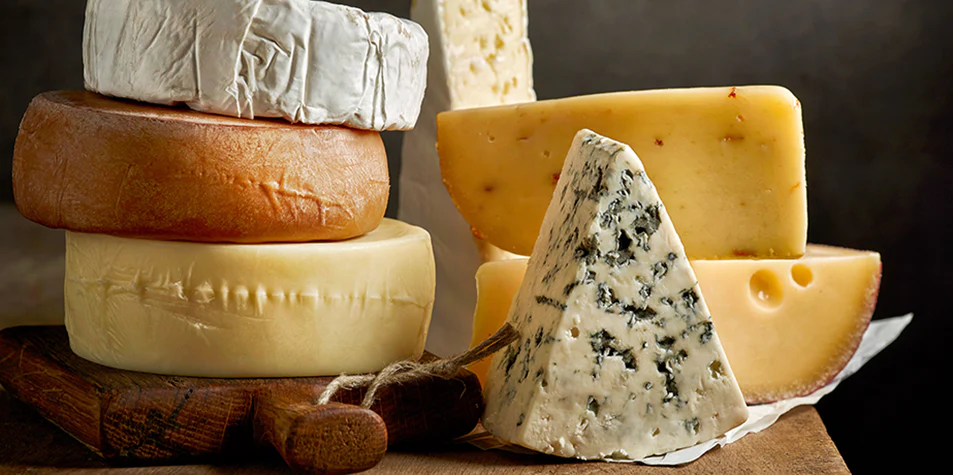Cheese – a timeless, delicious staple loved across continents – holds a central place in global culinary culture. From rich French brie to sharp English cheddar, creamy Italian mozzarella to tangy Greek feta, cheese transcends borders, pairing effortlessly with wine, bread, and fruit, or melting perfectly into pasta, burgers, and countless dishes. But amid this universal appreciation for cheese, a question arises: Which country is the largest cheese producer in the world?
The answer, surprisingly or not, is the United States of America. While many associate Europe with fine cheeses and centuries-old traditions, it is the U.S. that dominates in terms of total volume. Let’s dive deeper into the statistics, history, regional trends, and global implications of cheese production, exploring why the United States leads the world in this dairy domain.
The Global Cheese Market at a Glance

Cheese is one of the most widely produced and consumed dairy products in the world. The global cheese market was valued at over USD 80 billion in 2024 and is expected to reach USD 112 billion by 2030, driven by rising consumption in Asia-Pacific and Latin America, along with increasing demand for high-protein, convenience foods.
Key cheese-producing countries include:
- United States
- Germany
- France
- Italy
- Netherlands
- Russia
- Poland
However, in terms of absolute volume, the U.S. stands out by a significant margin, producing over 6.5 million metric tons of cheese annually.
United States: The Undisputed Leader in Cheese Production

1. Volume of Production
The United States produces more cheese than any other nation, accounting for approximately 30% of the global cheese output. According to data from the U.S. Department of Agriculture (USDA) and the International Dairy Federation (IDF), the U.S. produced 6.6 million metric tons of cheese in 2023 – far outpacing its closest competitors.
2. Major Cheese-Producing States
Cheese production in the U.S. is highly concentrated in the Midwest and West. The top cheese-producing states are:
- Wisconsin – Often dubbed “America’s Dairyland”, Wisconsin alone produces about 3.4 billion pounds of cheese annually.
- California – A close second, California is especially known for mozzarella and Hispanic-style cheeses.
- Idaho, New Mexico, and New York – Other significant contributors to national cheese output.
3. Types of Cheese Produced
The most produced cheese in the U.S. is mozzarella, largely due to its demand in the pizza industry. Other popular varieties include:
- Cheddar
- American processed cheese
- Colby
- Monterey Jack
- Cream cheese
The growing market for specialty and artisan cheeses has also fueled innovation and diversification in American cheese-making.
4. Infrastructure and Innovation
The U.S. cheese industry benefits from:
- Advanced dairy technology
- Large-scale dairy farms
- Robust supply chains
- Research support from institutions like the Wisconsin Center for Dairy Research
This infrastructure enables not only mass production but also high-quality product output and continuous innovation in flavors, textures, and formats.
European Giants: High Quality, Smaller Scale

Although Europe may not match the U.S. in quantity, it excels in quality, diversity, and tradition. Some of the most iconic and protected cheese varieties (via Protected Designation of Origin – PDO) come from Europe.
1. Germany – The Closest Competitor
- Cheese Production: Around 2.3 million metric tons annually
- Germany is the largest cheese producer in Europe, known for producing gouda, edam, and emmental.
- The country is also a major cheese exporter, with most products shipped within the EU.
2. France – The Artisan Cheese Capital
- Cheese Production: Over 1.8 million metric tons per year
- Home to more than 1,000 types of cheese, including brie, camembert, roquefort, and reblochon.
- French cheese culture is deeply embedded in its gastronomy and rural economy.
3. Italy – The Heart of Traditional Cheesemaking
- Cheese Production: Over 1.4 million metric tons annually
- Known for parmesan (Parmigiano Reggiano), mozzarella, ricotta, gorgonzola, and pecorino.
- Italy emphasizes traditional processes and protected designations (DOP).
Why the U.S. Leads in Cheese Production

There are several reasons behind America’s dominance in cheese production:
1. Scale of Dairy Industry
The U.S. has one of the largest dairy industries globally, with over 9 million dairy cows. The abundance of milk enables large-scale cheese production.
2. Consumer Demand
Cheese is an integral part of the American diet – from pizzas and burgers to sandwiches and snacks. The average American consumes over 18 kg of cheese per year, with demand steadily increasing.
3. Export Market
The U.S. is a leading cheese exporter, shipping large volumes to Mexico, South Korea, Japan, Canada, and China. U.S. cheeses are known for their affordability and quality.
4. Government and Institutional Support
Federal support for the dairy industry, through subsidies, research funding, and marketing boards (like the American Dairy Association), plays a key role in sustaining growth.
Challenges and Opportunities

While the U.S. leads in quantity, it faces competition in premium and artisanal cheese markets. European cheeses enjoy a luxury status and geographical indication protections that appeal to gourmet markets worldwide.
Key Challenges:
- Rising competition from plant-based cheese alternatives
- Environmental concerns linked to industrial dairy farming
- Trade disputes affecting export markets
Opportunities:
- Growth in organic and artisanal cheese segments
- Rising demand in Asia-Pacific markets
- Innovation in functional and health-based cheeses (e.g., low-fat, high-protein)
Conclusion: A Cheese Giant with Room to Grow
In conclusion, the United States is the largest cheese producer in the world, driven by a robust dairy infrastructure, growing domestic consumption, and a strong export network. While Europe retains its identity as the home of heritage cheeses, the U.S. continues to lead the global cheese industry in volume and industrial innovation.
However, the future of cheese production is not only about quantity. Sustainability, diversity, craftsmanship, and global adaptability are key pillars for the next chapter of growth. As consumers become more conscious and adventurous, the world of cheese will only continue to evolve – and the United States is poised to remain at the forefront of this delicious journey.
Fun Fact:
The world’s largest cheese ever produced was a cheddar cheese weighing 57,518 pounds (26,082 kg) made in Wisconsin for the 1964 New York World’s Fair – a fitting tribute to America’s cheese leadership!





Leave A Comment